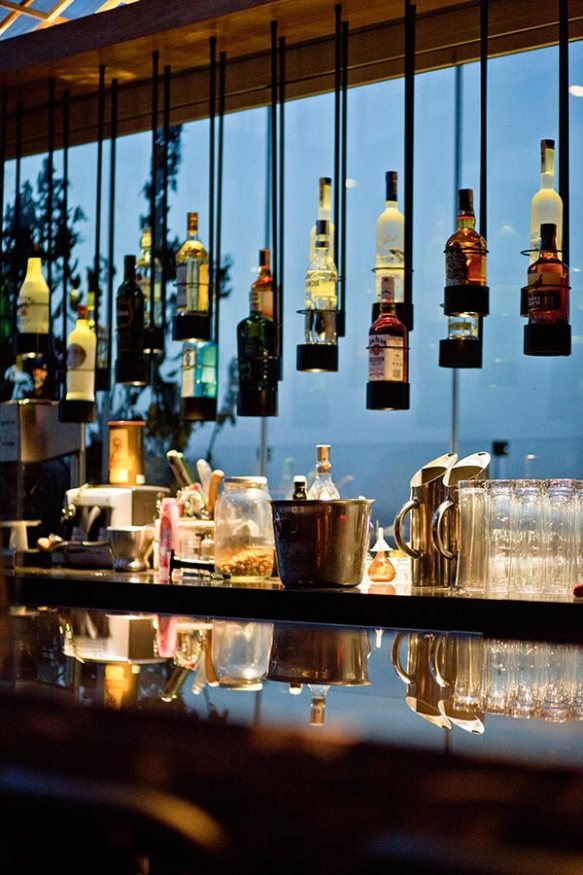For a better understanding and to complete all those elements linked to the brand experience that influence the buying process, we will count with the collaboration of experts that will introduce concepts that will improve our business development, from different disciplines and points of view. Today we are pleased to introduce a text of Deniz Yavuz, interior architect and designer.
Once you have lived or spent time in Istanbul, you will probably go back to this city again, since you can explore new places every day. The city has hosted so many cultures throughout history and, no matter what culture you come from, you will definitely find something to do according to your mood, as the city offers a lot of diversity.
If you have been in Turkey before, you will probably know that ‘Taverns’ and ‘Raki’ own a significant place in the Turkish culture. Turkish people like to spend long hours and a pleasant time at the table with their loved ones, but, however, they try not to be full up: they usually drink ‘Raki’ with ‘Meze’, some small dishes like appetizers, similar to the Spanish ‘tapas’. So if we added to all this the beautiful Istanbul view and the singing of nostalgic Turkish songs together with the other guests, what could be a better atmosphere for a good night?
Located on the rooftop of the historical Palazzo Donizetti Hotel around Pera, Beyoğlu area, the Duble Meze Bar is the place where all these expectations meet exactly and it is also one of the best examples of ‘Modern Taverns’. In contrast with the other traditional Turkish taverns, the place has a minimal and very attractive interior. With the combination of spacious interior design, a beautiful view of Haliç (The Golden Horn) and a delicious menu, the result is obviously efficient.
For such kind of restaurants, the interior design, the menu or the location are just not enough to get successful results; the creators of the place are on top of everything going on inside. When you think about their positioning, you see that they have determined what is inadequate in this kind of places and that they have carefully chosen their target market. The location, the ambiance they offer and their public relations strategy reach exactly their target market. People mostly find Duble Meze Bar from influential blogs, articles or recommendations, as they don’t put big advertisements on newspapers. Their logo, menu and business cards also have a minimalistic and eye-catching design. Whenever you see them, you already have an idea about the interior ambiance and the brand’s promise, and that’s what one expects from the graphic applications of a brand.
Duble Meze Bar opened its doors a few months ago, but it already has a remarkable reputation among the many other famous restaurants in Istanbul. If they have achieved such success in a very short time, don’t you think that their business strategy must be right?
—-
Para completar y entender mejor todos los elementos vinculados a la experiencia de marca que inciden en el proceso de compra, contaremos con la colaboración de expertos que nos irán introduciendo, desde distintas disciplinas y visiones, conceptos que nos ayudarán a construir mejor nuestro negocio. Hoy estamos encantados de presentaros un texto de Deniz Yavuz, arquitecta y diseñadora de interiores.
Si has vivido o pasado tiempo en Estambul, es muy probable que vuelvas de nuevo a esta ciudad que cada día te sorprende con algo nuevo. La ciudad ha acogido muchas culturas diferentes a lo largo de la historia y, sin importar cuál sea la tuya, siempre encontrarás algo que se adapte a tu forma de ser gracias a su diversidad.
Si ya has estado en Turquía, probablemente sepas que las tabernas y el “Raki” juegan un papel muy importante en la cultura turca. A los turcos les gusta pasar largos y magníficos ratos en la mesa con sus seres queridos, pero esto no significa que coman abundantemente: suelen beber “Raki” acompañado de “Meze”, pequeños platos de entremeses similares a las tapas. Si a todo ello le sumamos la bonita vista de Estambul y el canto de nostálgicas canciones turcas junto a otros comensales, ¿qué más se puede pedir?
Situado en la azotea del histórico Hotel Palazzo Donizetti en el área de Pera, Beyoğlu, el Duble Meze Bar es el sitio donde todo esto confluye y uno de los mejores ejemplos de taberna moderna. En contraste con el resto de tradicionales tabernas turcas, este lugar goza de un interior minimalista y atractivo. Con la combinación de un diseño interior espacioso, una bonita vista del Haliç (el Cuerno de Oro) y un delicioso menú, el resultado es obviamente eficiente.
Para este tipo de restaurantes, el diseño interior, el menú o su localización no son suficientes para el éxito; los creadores de este sitio tienen bajo control cada detalle de lo que sucede dentro. Cuando nos fijamos en el posicionamiento, detectamos que partiendo de lo que se considera inadecuado para estos restaurantes, se elige cuidadosamente el público objetivo. El lugar, el ambiente y la estrategia de relaciones públicas están perfectamente dirigidas a su target. El Duble Meze Bar no se anuncia en periódicos, y es por ello que la gente suele conocerlo ya sea por influyentes blogs, artículos o incluso por recomendaciones de terceros. Su logo, el menú y sus tarjetas corporativas también muestran un diseño minimalista y atractivo, que proporcionan una idea del ambiente interior y de la promesa de marca, algo que la aplicación gráfica de una marca siempre debería comunicar.
El Duble Meze Bar abrió sus puertas hace tan sólo unos meses, y ya cuenta con una increíble reputación entre los muchos otros restaurantes famosos de Estambul. Si en tan poco tiempo ha conseguido este éxito, ¿no creéis que su estrategia de negocio debe ser buena?
Deniz Yavuz





